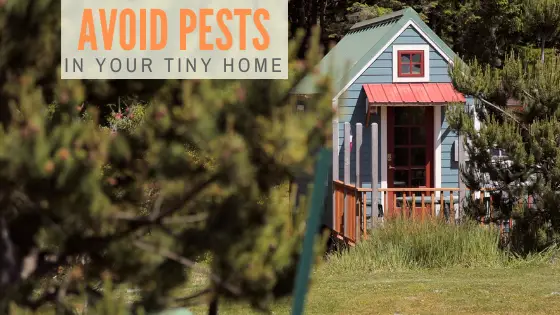Living in a tiny home may seem like an idyllic and minimalist lifestyle choice, but it also comes with its fair share of challenges. One commonly asked question is how these pint-sized abodes deal with pests. With limited space and unique construction, tiny homes require inventive solutions to keep unwanted critters at bay. In this article, we’ll explore the various tactics utilized by tiny home dwellers to maintain a pest-free environment and make their cozy living spaces truly feel like home.
Preventive Measures
Sealing entrances and cracks
One of the most effective ways to prevent pests from entering your tiny home is by sealing any entrances and cracks. Inspect your home thoroughly and look for any small openings where pests could potentially enter, such as gaps in windows and doors, cracks in the foundation, or holes in the walls. Use caulk or sealant to seal these openings, ensuring that pests have no way to get inside. By creating a strong barrier, you can significantly reduce the likelihood of a pest infestation in your tiny home.
Installing screens and mesh
To keep pests like mosquitoes, flies, and other flying insects out of your tiny home, consider installing screens on your doors and windows. Screens act as a physical barrier, preventing pests from entering while still allowing fresh air to circulate. Make sure the screens fit tightly and have no holes or tears that could provide an entry point for pests. Additionally, consider installing mesh coverings on vents and chimneys to prevent pests like rodents or birds from gaining access to your home through these openings.
Using weatherstripping
Weatherstripping is not only effective for energy efficiency but also for preventing pests from entering your tiny home. Install weatherstripping around doors and windows to create a tight seal, eliminating any gaps or cracks that pests could use as entry points. This can help keep out not only insects but also larger pests like rodents. Be sure to regularly check and replace weatherstripping as needed to maintain its effectiveness in pest prevention.
Cleaning and decluttering regularly
Maintaining a clean and clutter-free environment is essential in preventing pests from taking up residence in your tiny home. Pests are attracted to food sources and hiding places, so it’s important to keep your home tidy and free of crumbs, spills, and food debris. Regularly sweep and vacuum the floors, wipe down surfaces, and clean up any spills promptly. Don’t forget to declutter and organize your belongings as well, as clutter provides hiding spots for pests.
Keeping food properly stored and sealed
Proper food storage is crucial in preventing pests from being attracted to your tiny home. Make sure all food items are stored in airtight containers or sealed bags to prevent pests from detecting and accessing them. This applies to both pantry items and perishable foods. Take extra precautions to store food securely if you live in an area prone to pests, such as ant-proofing your food storage area or using sealed containers for pet food. By eliminating potential food sources, you can greatly reduce the likelihood of pests infesting your tiny home.
Natural Pest Control Methods
Essential oils and herbs
Using essential oils and herbs can be an effective natural method to deter pests from your tiny home. Certain scents are known to repel insects, such as peppermint, lavender, eucalyptus, and citronella. By placing cotton balls soaked in these essential oils or using fresh herbs with strong scents around your home, you can create a natural barrier that pests are less likely to cross. Consider placing these around entrances, windowsills, and other areas where pests may try to enter.
Vinegar solutions
Vinegar is a versatile household item that can also be used as a natural pest control method. Create a solution of equal parts vinegar and water and use it to wipe down surfaces, particularly areas prone to pests like countertops and kitchen cabinets. The strong smell of vinegar can repel pests, and it also acts as a mild disinfectant. You can also create a vinegar solution to spray around entrances, windows, and other areas where pests may attempt to enter.
Diatomaceous earth
Diatomaceous earth is a natural and non-toxic substance that can be used for pest control in tiny homes. It is made from fossilized diatoms, a type of algae, and has abrasive properties that are effective against pests like ants, bed bugs, and cockroaches. Spread a thin layer of diatomaceous earth in areas where pests are present or are likely to travel, such as along baseboards or under furniture. As pests come into contact with the diatomaceous earth, it damages their exoskeleton, leading to dehydration and eventual death.
Boric acid
Boric acid is another natural and low-toxicity substance that can be used for pest control in tiny homes. It is particularly effective against cockroaches and ants. To use boric acid, sprinkle a fine layer in areas where pests are active, such as behind appliances, under sinks, or along baseboards. Pests will come into contact with the boric acid, which acts as a stomach poison, killing them over time. However, it’s important to use boric acid with caution and keep it out of reach of children and pets.
Citrus peels
Citrus peels not only add a fresh scent to your tiny home but can also serve as a natural pest deterrent. Pests like ants, spiders, and cockroaches dislike the scent of citrus. Save your citrus peels after enjoying a juicy orange or lemon and place them in areas where pests are likely to enter or hide. You can also create a homemade citrus spray by boiling the peels in water, straining the liquid, and using it to spray around entrances, windows, and other areas vulnerable to pests.
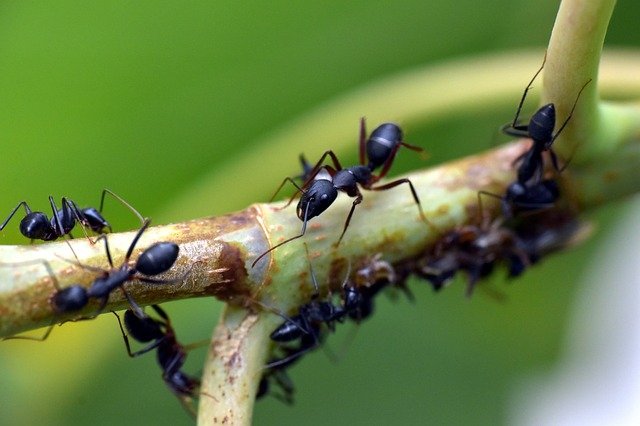
Mechanical Pest Control Methods
Sticky traps
Sticky traps are a simple yet effective mechanical pest control method for tiny homes. These traps consist of a sticky surface that pests become trapped on when they come into contact with it. Sticky traps can be used to monitor and control various pests, such as flies, spiders, and crawling insects. Place these traps near entrances, windows, and other areas where pests are likely to enter or roam. Check the traps regularly and dispose of them when they become full.
Fly swatters
For flying insects like flies, a trusty fly swatter can be a handy tool for pest control in your tiny home. Keep one or two fly swatters readily accessible, especially during warmer months when flies are more active. When you see a fly or other flying insect in your home, use the fly swatter to quickly and efficiently eliminate the pest. Remember to clean the fly swatter after each use to prevent the spread of germs.
Ultrasonic devices
Ultrasonic devices emit high-frequency sound waves that are beyond the range of human hearing but can repel pests like rodents and insects. These devices are small and portable, making them ideal for use in tiny homes. Simply plug them into electrical outlets around your home, and they will emit sound waves that pests find irritating, causing them to stay away. Keep in mind that ultrasonic devices may not be effective for all pests, and results may vary.
Rodent traps
If you have a rodent problem in your tiny home, using rodent traps can help eliminate these pests. There are various types of traps available, including snap traps, electronic traps, and glue traps. Snap traps are the traditional type, where the rodent is lured onto a trigger plate and caught in a spring-loaded mechanism. Electronic traps deliver a lethal shock to the rodent, ensuring a quick and humane kill. Glue traps capture rodents by sticking them to a sticky surface and can be used as a last resort. Place traps in areas where you have noticed signs of rodent activity, such as droppings or gnaw marks, and check them regularly.
Bed bug interceptors
Bed bugs can be an unfortunate and challenging pest to deal with in tiny homes. Bed bug interceptors are devices that are placed under the legs of beds and furniture to prevent bed bugs from crawling up onto them. These interceptors create a barrier that the bugs cannot climb, trapping them inside and preventing them from reaching you while you sleep. Regularly inspect the bed bug interceptors for any signs of infestation and take appropriate action if necessary.
Chemical Pest Control Methods
Insecticide sprays
Insecticide sprays can be a fast and effective method for controlling pests in your tiny home. There are various insecticide sprays available on the market, targeting specific pests like ants, roaches, and spiders. Choose a spray that is labeled for indoor use and suitable for the specific pest you are dealing with. Before using the spray, make sure to read and follow the instructions carefully. Use caution when applying insecticide sprays and avoid direct contact with humans and pets.
Pesticide dusts
Pesticide dusts are a type of dry insecticide that can be used for targeted pest control. They are typically applied in cracks, crevices, and voids where pests hide and travel. Pesticide dusts work by adhering to the pests’ bodies, dehydrating them, and causing death. Commonly used pesticide dusts include diatomaceous earth, silica aerogel, and insecticidal dusts containing pyrethrins or pyrethroids. When using pesticide dusts, be sure to wear protective gloves and a mask to avoid inhalation.
Baits and gels
Baits and gels are effective for pest control, particularly for ants, cockroaches, and termites. These products contain attractive substances mixed with insecticides, which pests consume and then carry back to their colonies, effectively eliminating the entire population. Place bait stations or gel applicators in areas where pests are active or near their entry points. Follow the instructions provided by the manufacturer for proper application and placement. Keep baits and gels out of reach of children and pets.
Insect growth regulators
Insect growth regulators (IGRs) are chemicals that disrupt the normal development and reproduction of insects. They are commonly used in pest control to prevent the growth and maturation of pests, effectively reducing their populations. IGRs are available as sprays, concentrates, or aerosols and target various pests like fleas, mosquitoes, and cockroaches. Follow the instructions provided by the manufacturer for proper application and use caution when handling IGRs.
Insect foggers
Insect foggers, also known as bug bombs, are aerosol cans that release a mist or fog of insecticide into the air. These foggers are designed to treat entire rooms or areas for pests such as flies, mosquitoes, and fleas. Before using an insect fogger in your tiny home, make sure to carefully read and follow the instructions for proper application and safety precautions. It is important to vacate the premises during fogging and ensure proper ventilation before re-entering.
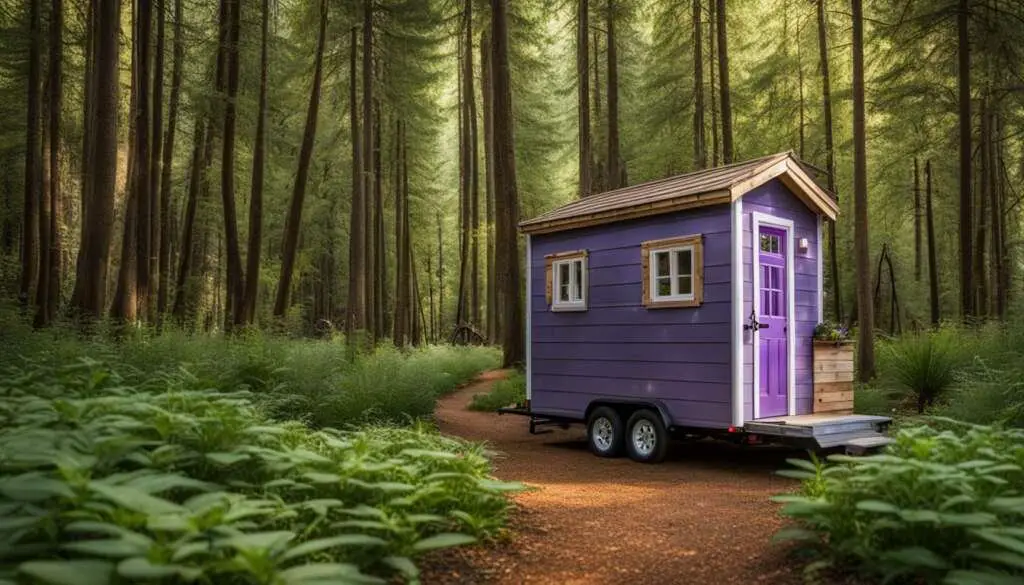
Hiring Professional Pest Control Services
Researching and choosing a reputable company
If you find yourself unable to effectively manage a pest problem in your tiny home, it may be necessary to seek professional pest control services. When selecting a pest control company, take the time to research and choose a reputable and experienced provider. Look for companies with positive reviews and testimonials, proper licensing and certifications, and a focus on eco-friendly and humane pest control methods. You can also ask for recommendations from friends, family, or neighbors who have used pest control services in the past.
Regular inspections and treatments
Once you have hired a professional pest control company, they will conduct regular inspections and treatments to prevent and control pests in your tiny home. These inspections will help identify any signs of pest activity or vulnerabilities in your home that could lead to future infestations. The pest control professionals will then tailor a treatment plan based on the specific pests and conditions in your home. Regular treatments, including the use of eco-friendly methods and products, will help maintain a pest-free environment in your tiny home.
Discussing environmentally-friendly options
When hiring professional pest control services for your tiny home, it’s important to discuss environmentally-friendly options with the company. Nowadays, many pest control companies offer eco-friendly or low-toxicity pest control solutions that minimize the impact on the environment and non-target species. Talk to the professionals about your preferences for eco-friendly methods or any specific concerns you may have regarding the use of certain chemicals. A reputable company will be able to provide options that align with your values and needs.
Following their recommendations
Once you have hired professional pest control services, it is crucial to follow their recommendations and instructions for pest control in your tiny home. This may include making certain preparations before treatments, such as clearing out specific areas or covering food and dishes. It is also important to follow any post-treatment care instructions, such as ventilating your home or avoiding certain areas for a specified time. By following their recommendations, you can maximize the effectiveness of the treatments and contribute to a long-lasting pest-free environment.
Maintaining a pest control schedule
To ensure ongoing pest control in your tiny home, it is recommended to maintain a regular pest control schedule with the hired professionals. This schedule will depend on various factors, including the specific pests and conditions in your area. Regular treatments and inspections will help catch any early signs of pest activity and address them promptly before they become major problems. By staying proactive and consistent with pest control, you can enjoy a pest-free living space in your tiny home.
Dealing with Common Pests
Ants
Ants are a common pest problem in tiny homes due to their small size and ability to squeeze through tiny openings. To deal with ants, it is important to identify and eliminate their food sources. Clean up spills and crumbs promptly, store food in sealed containers, and wipe down surfaces regularly. Natural deterrents like peppermint oil or vinegar solutions can be effective in repelling ants. If the ant problem persists, professional pest control services can provide effective solutions.
Rodents
Rodents like mice and rats can be challenging to deal with in tiny homes. Prevent their entry by sealing any cracks or openings, and keep food stored in airtight containers. Set up traps or baits to capture and eliminate rodents if they still manage to enter. Regularly check for signs of rodent activity, such as droppings or chew marks. If the infestation becomes unmanageable, professional pest control services can help eradicate rodents and prevent future infestations.
Termites
Termites can cause significant damage to your tiny home if left untreated. Signs of termite infestation may include discarded wings, mud tubes, or hollow-sounding wood. If you suspect termites, it is crucial to seek professional pest control services immediately. Termite treatments may involve the use of liquid termiticides or baiting systems. Regular inspections and preventive measures can help catch termites early and minimize the risk of severe damage.
Cockroaches
Cockroaches are resilient pests that can quickly multiply if left unchecked. To deal with cockroaches in your tiny home, practice good sanitation by regularly cleaning and decluttering. Remove potential food and water sources, seal cracks, and eliminate hiding places. Sticky traps or roach baits can be used to capture and eliminate cockroaches. If the infestation persists, professional pest control services can provide more effective treatments.
Bed bugs
Discovering bed bugs in your tiny home can be distressing since they can cause itchy bites and disrupt your sleep. To deal with bed bugs, it is important to take immediate action. Start by washing and drying infested bedding and linens at high temperatures. Vacuum your mattress, furniture, and crevices thoroughly. Sealing and disposing of infested items may be necessary in severe cases. Bed bug treatments often require professional pest control services, as the pests can be challenging to eliminate completely.
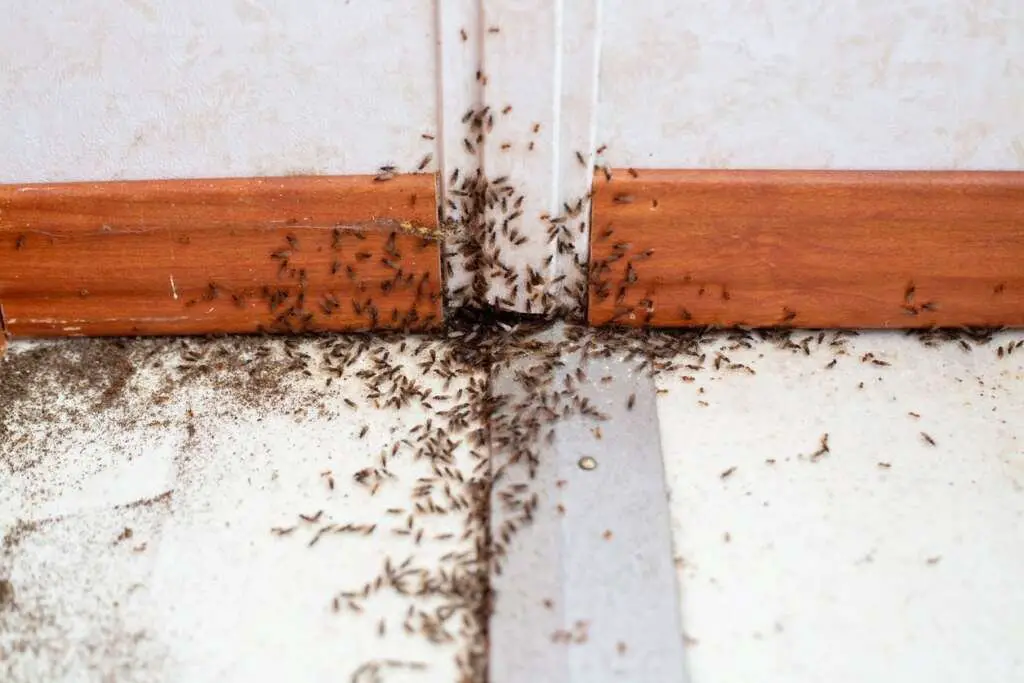
Preventing Pests in Outdoor Spaces
Clearing vegetation and debris
Preventing pests from entering your tiny home begins with taking care of your outdoor spaces. Clearing away vegetation and debris around your foundation and entry points is essential, as they provide hiding places and breeding grounds for pests. Trim shrubs and trees that are in close proximity to your home, and remove any dead leaves or branches. By keeping the immediate surroundings of your tiny home clean and well-maintained, you can reduce the attractiveness of your property to pests.
Proper waste management
Proper waste management is crucial in preventing pests from being drawn to your outdoor spaces. Ensure that you have well-sealed garbage bins or containers to prevent pests like rodents, raccoons, or stray animals from accessing your trash. Regularly empty and clean the bins to avoid attracting pests with food residues or odors. If you have a compost pile, make sure it is properly maintained and covered to prevent pests from feeding on the organic material.
Using natural repellents
Natural repellents can be used to deter pests from your outdoor spaces. Consider planting pest-repelling plants like lavender, marigold, or citronella around your tiny home. These plants emit scents that many pests find unpleasant. Other natural repellents include using citronella candles or torches, applying essential oils like lemon eucalyptus or neem oil to your skin, or hanging up mesh bags filled with dried mint leaves or cedar chips. These natural methods can help create a barrier that pests are less likely to cross.
Installing physical barriers
Installing physical barriers in your outdoor spaces is an effective method to prevent pests from entering your tiny home. For example, you can install fine mesh screens or netting around your tiny home’s foundation to prevent pests like rodents or insects from burrowing underneath. If you have a garden, consider installing fences or mesh enclosures to keep out larger pests like deer or rabbits. By creating physical barriers, you can protect your outdoor spaces from pests and minimize the risk of them finding their way inside.
Regular maintenance and landscaping
Regular maintenance and landscaping of your outdoor spaces can contribute to pest prevention. Keep grass and weeds trimmed to reduce harborage areas for pests. Remove standing water, as it can attract mosquitoes and other water-loving pests. Fix any leaky outdoor faucets or irrigation systems to prevent water buildup. Conduct regular inspections of your buildings, fences, and garden structures to identify and repair any openings or damage that could serve as entry points for pests. By staying proactive with maintenance and landscaping, you can create a pest-resistant environment around your tiny home.
Educating Yourself about Tiny Home Pest Control
Identifying common pests and signs of infestation
To effectively deal with pests in your tiny home, it is important to educate yourself about common pests and recognize the signs of infestation. Learn about the characteristics and behaviors of pests that are commonly found in your area, such as ants, spiders, rodents, or bed bugs. Be aware of the visual signs they leave behind, such as droppings, chew marks, or shed skins. By promptly identifying the presence of pests and understanding their traits, you can take appropriate action to control and prevent infestations.
Understanding their behaviors and habitats
Understanding the behaviors and habitats of pests is essential for effective pest control. Learn about the nesting habits, food preferences, and movement patterns of pests commonly found in and around tiny homes. For example, ants may be attracted to sugary or greasy substances, and therefore, it is important to keep your tiny home clean and food properly sealed. Understanding how pests enter and navigate your home can help you implement preventive measures in areas of vulnerability.
Knowing the risks and potential damage
Knowing the risks and potential damage caused by pests can motivate you to take proactive measures. Pests like termites and rodents can cause significant structural damage to your tiny home if left untreated. Bed bugs can cause discomfort and sleep disturbances, while certain pests like mosquitoes and ticks can transmit diseases. Being aware of these risks can encourage you to prioritize pest prevention and take action at the earliest signs of a pest problem.
Learning effective control methods
Educating yourself about effective pest control methods is important to address pest issues in your tiny home. By familiarizing yourself with the preventive measures, natural control methods, and chemical treatments mentioned earlier, you can determine which methods are suitable for the specific pests you are dealing with. Understanding the pros and cons of each method can help you make informed decisions and effectively manage pest problems.
Staying updated on new prevention techniques
Pest control techniques and products are constantly evolving, so it is important to stay updated on the latest prevention techniques for tiny home pest control. Follow reputable sources for information on pest control, such as trusted websites or local pest control agencies. Stay informed about new products, technologies, and eco-friendly methods that may be more effective at controlling pests in your tiny home. By staying current, you can continue to improve your pest control practices and effectively protect your living space.
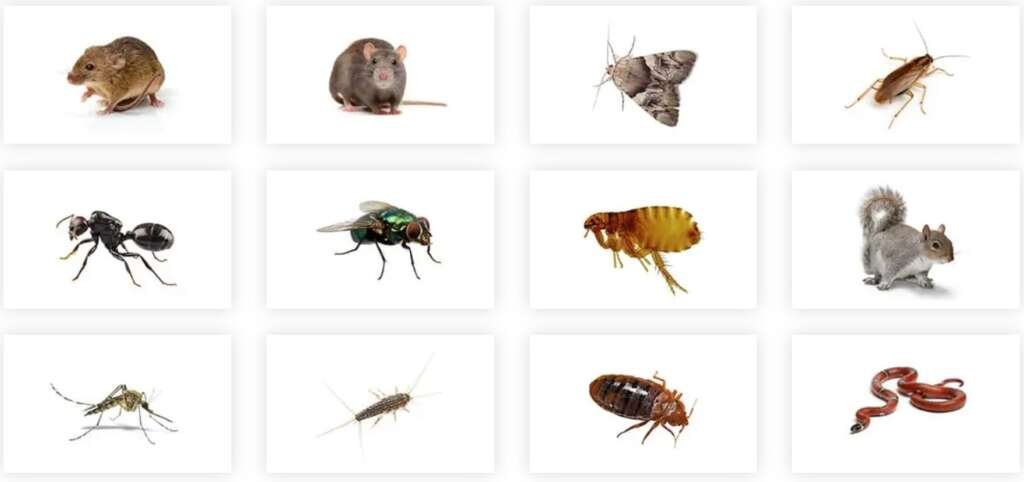
Creating a Pest Control Plan
Assessing the property and potential vulnerabilities
Creating a pest control plan for your tiny home begins with assessing your property and identifying potential vulnerabilities. Conduct a thorough inspection of your home, both inside and outside, to identify areas where pests may enter or find shelter. Look for cracks, gaps, or openings that need sealing, and evaluate the condition of screens, doors, and windows. Consider the surrounding environment and note any vegetation, water sources, or other factors that may attract pests. This assessment will help you identify vulnerabilities that need to be addressed in your pest control plan.
Implementing preventive measures
Based on the vulnerabilities identified, implement preventive measures to reduce the risk of pests entering your tiny home. This may involve sealing entrances and cracks, installing screens and mesh, using weatherstripping, cleaning and decluttering regularly, and properly storing food. Take the necessary steps to address each vulnerability and create a strong barrier against pests. Prevention is key in minimizing the chances of a pest infestation in your tiny home.
Choosing suitable control methods
When creating your pest control plan, consider the specific pests you are dealing with and choose suitable control methods accordingly. Refer to the earlier sections on natural, mechanical, and chemical control methods for guidance. Determine which methods align with your preferences and are appropriate for the pests you are targeting. A combination of methods may be necessary for effective control, so choose those that suit your situation best.
Monitoring and evaluating effectiveness
Regular monitoring and evaluation are essential components of a successful pest control plan. Keep an eye out for any signs of pest activity, such as droppings, chew marks, or pest sightings. Monitor the effectiveness of the control methods you have implemented and assess whether they are achieving the desired results. If pests persist or the situation worsens, you may need to reassess your plan and make necessary adjustments.
Making necessary adjustments
Flexibility is key when it comes to pest control. If your initial control methods are not achieving the desired results, be open to making necessary adjustments to your plan. Seek alternative methods or consult with professional pest control services for guidance. Continue to monitor and evaluate the effectiveness of the adjustments and make additional changes as needed. By being proactive and adaptable, you can maintain a pest-free environment in your tiny home.
Promoting a Pest-Free Environment
Maintaining cleanliness and hygiene
Maintaining cleanliness and hygiene is crucial in promoting a pest-free environment. Regularly clean your tiny home, paying special attention to areas where pests are commonly found, such as kitchens, bathrooms, and living areas. Sweep, vacuum, and mop the floors, wipe down surfaces, and sanitize frequently touched areas. Properly dispose of garbage and food waste promptly to avoid attracting pests. By practicing good hygiene, you can minimize the chances of pests infesting your living space.
Proper waste disposal
Proper waste disposal is key in preventing pests from being attracted to your tiny home. Securely store garbage in sealed containers and empty them regularly, particularly food waste that can easily attract pests. If your tiny home does not have a dedicated trash collection service, consider using a nearby disposal facility or composting organic waste in a controlled manner. Avoid leaving bags of trash or piles of waste near your home for extended periods, as this can encourage pests to take up residence.
Regular home maintenance
Regular home maintenance is essential in promoting a pest-free environment. Stay proactive with repairs and maintenance tasks, addressing any issues promptly to minimize potential openings for pests. Check for leaks, cracks, or damage that may provide entry points or create favorable conditions for pests. Keep your tiny home well-maintained, ensuring that doors, windows, and screens are in good condition. By addressing maintenance issues as they arise, you can prevent them from becoming larger problems that attract pests.
Cultivating a pest-resistant garden
If you have an outdoor garden or landscaping around your tiny home, consider cultivating a pest-resistant garden. Choose plants that are naturally resistant to pests or known to repel them, such as basil, marigold, or lavender. Practice proper plant care, including watering and fertilizing appropriately to promote healthy growth and resilience against pests. Regularly inspect your plants for any signs of pest activity and take action promptly if necessary, using natural control methods whenever possible.
Educating family and guests
Promoting a pest-free environment in your tiny home involves educating your family members and guests about the importance of pest control. Teach them about preventive measures, such as keeping food properly sealed, closing doors and windows to prevent pests from entering, and promptly cleaning up spills or messes. Encourage everyone to practice good hygiene habits and be mindful of their actions that may attract pests. By creating awareness and fostering a collective effort, you can maintain a pest-resistant living space.
In conclusion, dealing with pests in tiny homes requires a combination of preventive measures, natural control methods, mechanical pest control, and, if necessary, chemical control methods. By implementing sealing techniques, proper storage, and regular cleaning, you can significantly reduce the likelihood of pests entering your home. Utilizing natural remedies, such as essential oils, vinegar, and diatomaceous earth, can further deter pests in a friendly and non-toxic way. Mechanical methods like sticky traps and fly swatters provide a hands-on approach to pest control. When all else fails, chemical methods can be employed, but it is important to choose environmentally-friendly options and follow the instructions carefully. Hiring professional pest control services can be beneficial in severe infestations or for ongoing prevention. Understanding and dealing with common pests specific to tiny homes, preventing pests in outdoor spaces, and educating yourself about pest control methods are essential in creating a comprehensive pest control plan. By maintaining a pest-free environment through cleanliness, proper waste disposal, regular home maintenance, and cultivating a pest-resistant garden, you can ensure a pleasant living experience in your tiny home.
